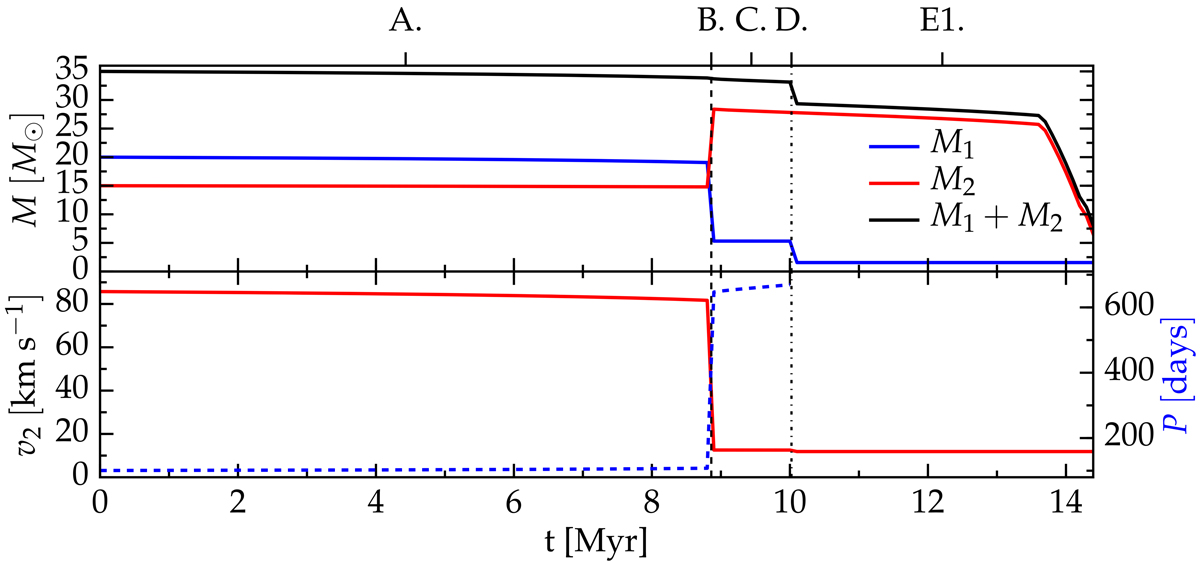Fig. 2.

Evolution of an example binary system with ![]() = 20 M⊙,
= 20 M⊙, ![]() = 15 M⊙ with PZAMS = 100 days, described in Sect. 3 (see also the cartoon in Fig. 1). Top panel: primary, secondary, and total mass. Bottom panel: orbital velocity of the secondary (left y-axis) and period of the binary (right y-axis). The labels indicate the following phases: A. the MS of the primary, B. case B RLOF, emphasized by the vertical dashed line, C. the binary is made of a He star (possibly looking like a Wolf-Rayet star) and a rejuvenated MS secondary; D. (and the vertical dot-dashed line) marks the explosion of the primary in a SNIb/Ic which unbinds the NS and its companion. During the phase E1. the secondary is a slow moving walkaway star, traveling for a duration of about half the main sequence lifetime of the primary.
= 15 M⊙ with PZAMS = 100 days, described in Sect. 3 (see also the cartoon in Fig. 1). Top panel: primary, secondary, and total mass. Bottom panel: orbital velocity of the secondary (left y-axis) and period of the binary (right y-axis). The labels indicate the following phases: A. the MS of the primary, B. case B RLOF, emphasized by the vertical dashed line, C. the binary is made of a He star (possibly looking like a Wolf-Rayet star) and a rejuvenated MS secondary; D. (and the vertical dot-dashed line) marks the explosion of the primary in a SNIb/Ic which unbinds the NS and its companion. During the phase E1. the secondary is a slow moving walkaway star, traveling for a duration of about half the main sequence lifetime of the primary.
Current usage metrics show cumulative count of Article Views (full-text article views including HTML views, PDF and ePub downloads, according to the available data) and Abstracts Views on Vision4Press platform.
Data correspond to usage on the plateform after 2015. The current usage metrics is available 48-96 hours after online publication and is updated daily on week days.
Initial download of the metrics may take a while.


